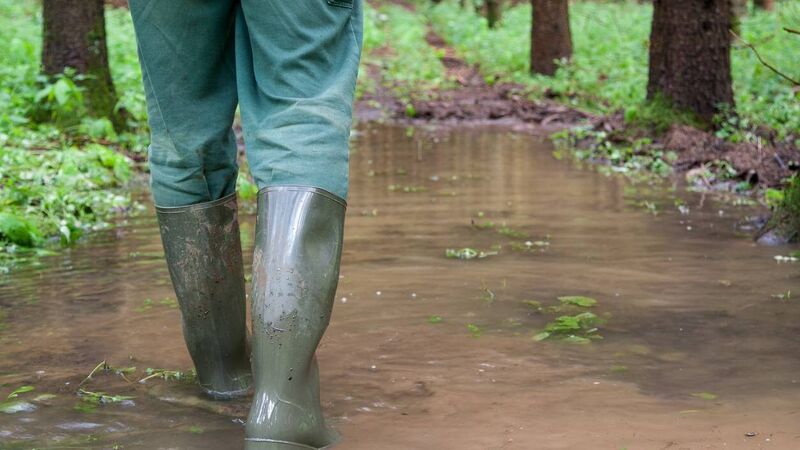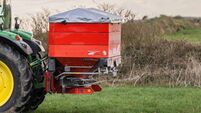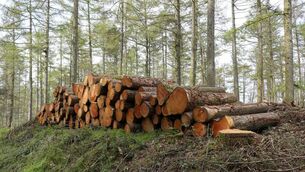Whatever the weather - Ireland among EU states placing lowest priority on farming's climate adaption

Weather stations at Athenry, Co Galway; Mace Head, Co Galway; and Mount Dillon, Co Roscommon, have just had their wettest March on record, breaking records set up to 32 years ago.
Could this year's wet spring be a taste of climate change to come?
Right now, farmers are more worried about the weekly forecast for full-time grazing or for sowing crops in late April than the often dire end-of-the-century weather warnings.
However, it can't be denied that the spring deluges are in line with the climate change forecast of extra rain for Northern Europe.
In March, there was over two times the usual rainfall at the Dublin Airport weather station, the wettest since 1947. Weather stations at Athenry, Co Galway; Mace Head, Co Galway; and Mount Dillon, Co Roscommon, also just had their wettest March on record, breaking records set up to 32 years ago.
However, this spring has followed a dry winter; only one of Met Éireann's 25 weather stations had winter rain above the 1981-2010 average.
There was only 67% of the usual December, January, and February rainfall at Oak Park, Co Carlow, and 71% at Dublin Airport. Five stations, ranging geographically from Ballyhaise in Co Cavan to Moore Park, Co Cork, had dry spells from November 27 to December 18.
There were conditions equivalent to absolute drought at Johnstown Castle, Co Wexford, between January 25 and February 9, and "partial droughts" in Co Dublin from January 14 to February 14.
As usual, the weather has been completely unpredictable more than a few days ahead, and farmers, who are more aware of the weather than most, have learned to live with it.
Maybe that is why Ireland has one of the lowest priority rankings for adaptation to climate change in its Strategic Plan for the new Common Agricultural Policy.
It is priority three, compared to priority one for countries such as France, Germany, Latvia, Portugal, Slovenia, and Spain.
This is revealed in a new report for the European Parliament on extreme climate challenges for agriculture in the EU, and on solutions to help farmers.
It includes a climate change forecast of more extremely hot summer temperatures over all of Europe, progressively drier in the South, and more heavy rainfall episodes in Northern and Central Europe.
This includes at least a five-fold increase in heatwave days by the end of the century, even in Europe's coolest climates, and up to 30 times more in warmer climates. Drought severity in Southern Europe (already at a very difficult level for farmers) could triple by the end of the century.
Climate change could cost EU agriculture many billions of euros annually. Sectors at most risk could be non-irrigated cereals, and specifically maize; fruit trees and perennials; potatoes in Northern Europe; and livestock which depend on green fodder.
Irish farmers will agree with the latter point, after the March deluges have delayed grazing and fertiliser for grass, with some sources already warning last week there could be a severe impact on winter fodder supplies in 2023-24.
In the new CAP, some member states seek to prevent flood damage with practices favourable to soil structure, such as rotations, plant cover, and limitation of tillage, plus maintenance or establishment of hedges or buffer zones.
It is understandable that several EU members have given climate mitigation higher priority in the CAO strategies than Ireland. Climate change is much more evident in other member states.
In 2022, a sweltering heatwave with record-breaking temperatures had disastrous consequences for agriculture in many continental countries, and in the UK.
In 2021, extreme rainfall led to severe flooding in the German states of North Rhine-Westphalia and Rhineland-Palatinate, and in Luxembourg, Belgium and the Netherlands. Earlier in the year, a very cold early April after a very warm March caused large-scale frost damage in grapevines and fruit trees in central France.
In 2017, 2018, 2019 and 2020, record-breaking summer heat waves hit Western Europe and Scandinavia. The 2018 heatwave made life difficult for Irish livestock farmers, and we had Storm Ophelia in October, 2017.
In 2017, severe winter weather brought extreme cold and snow in Italy, the Balkans and Turkey.
In 2016, extreme rainfall forced the evacuation of thousands in central and northeastern France and southern Germany.
Irish farmers escaped most of the extreme weather events. For example, Storm Desmond struck in December 2015, a winter month when farmers are well prepared for bad weather, even though Desmond broke records for 24-hour rainfall.
Other member states have not been so lucky, with 2015 also bringing a heatwave across much of Europe in early July. There were heavy rains and landslides in France, Germany and Czechia in 2010; and extreme heat and droughts in many Western and Southern Europe countries in 2003, 2006, and 2007.
The new report for the European Parliament acknowledges pronounced regional differences in the increasing climate extremes across Europe.
It warns that adaptation requires a systemic approach, whereas CAP interventions generally support single practices.
It recommends that better efforts be made to support risk management tools such as insurance, and says synergies between water management policies, agricultural policies and climate policies still need to be strengthened.












